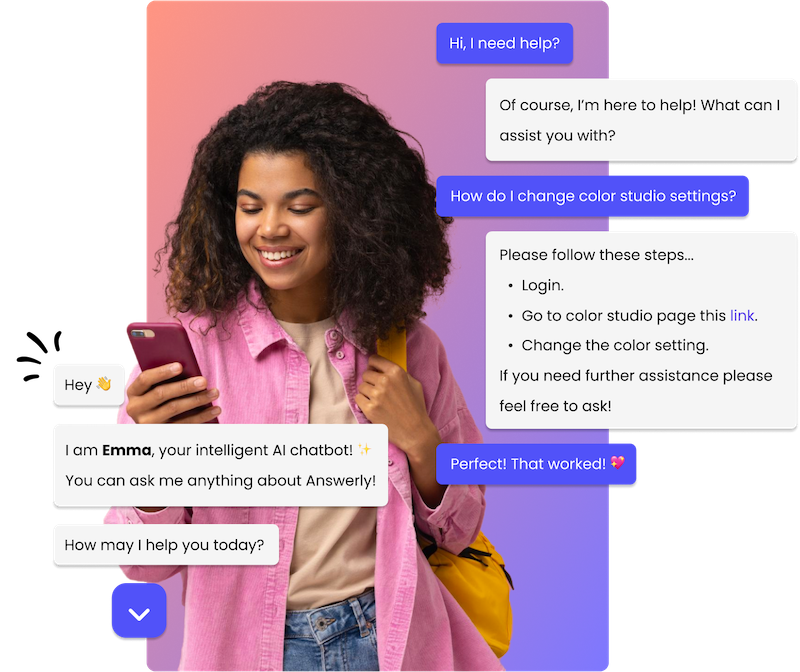Have you ever wondered how virtual assistants like Siri, Alexa, and Google Assistant seem to understand and respond to your every command? Unraveling the magic behind their language skills is a fascinating journey into the world of Natural Language Processing (NLP).
As you explore the inner workings of these AI-powered assistants, you'll uncover the intricate algorithms and machine learning techniques that enable them to interpret and process human language.
But what lies beneath the surface? How do they continuously improve their language processing capabilities? Join us as we dive deep into the realm of virtual assistants' language skills and discover the secrets that make them so remarkably intelligent.
Understanding Natural Language Processing
To understand Natural Language Processing, you need to grasp the intricacies of how virtual assistants process and comprehend human language. Natural Language Processing (NLP) is the field of study that focuses on the interaction between computers and human language. It enables virtual assistants, like Siri and Alexa, to understand and respond to our commands and questions.
NLP involves a series of complex processes that allow virtual assistants to interpret and make sense of human language. First, they use algorithms to break down sentences into smaller components, such as words and phrases. Then, they analyze the grammatical structure and syntax to determine the meaning of each component. This process is known as parsing.
Once the virtual assistants have parsed the sentence, they move on to the next step: semantic analysis. This involves understanding the meaning behind the words and phrases, as well as their relationships to one another. Virtual assistants use semantic analysis to extract relevant information and generate appropriate responses.
To enhance their language skills, virtual assistants rely on machine learning algorithms. These algorithms learn from vast amounts of data, allowing the assistants to improve their accuracy and understand the nuances of human speech.
How AI Assistants Interpret Human Language
Now, let's explore how virtual assistants like Siri and Alexa interpret human language to provide accurate responses. Here are four key ways in which AI assistants understand and interpret what we say:
- Natural Language Processing (NLP): Virtual assistants rely on NLP algorithms to break down human language into meaningful components. This involves identifying words, phrases, and sentence structures to extract the user's intent.
- Machine Learning (ML): AI assistants use ML algorithms to learn from vast amounts of data and improve their language interpretation abilities over time. By analyzing patterns and correlations, they can better understand context and provide more accurate responses.
- Semantic Analysis: Virtual assistants employ semantic analysis techniques to understand the meaning behind words and phrases. They consider the context, user's history, and previous interactions to provide relevant and personalized responses.
- Intent Recognition: AI assistants employ intent recognition models to identify the purpose or goal behind user queries. By recognizing the intent, they can provide appropriate responses or take specific actions, such as setting a reminder or ordering a product.
The Role of Machine Learning in Language Skills
Machine learning plays a crucial role in enhancing virtual assistants' language skills. Through the use of algorithms and statistical models, virtual assistants are able to learn and understand human language more effectively. These algorithms analyze vast amounts of data, enabling the virtual assistant to recognize patterns and make predictions about the meaning and intent behind different words and phrases.
One of the key ways in which machine learning improves language skills is through natural language processing (NLP). NLP algorithms enable virtual assistants to understand and interpret human language, allowing them to respond appropriately to user queries. These algorithms can identify the syntactic structure of sentences, extract relevant information, and generate meaningful responses.
Machine learning also helps virtual assistants improve their language skills by continuously learning and adapting to user interactions. By analyzing user feedback and behavior, virtual assistants can refine their language models, making them more accurate and responsive over time.
Machine learning enables virtual assistants to handle complex language tasks such as sentiment analysis, language translation, and speech recognition. By training on large datasets, virtual assistants can develop the ability to understand and generate human-like language, making them more versatile and useful to users.
Uncovering the Algorithms Behind Virtual Assistants
By exploring the algorithms behind virtual assistants, you can gain insight into the inner workings of these intelligent systems. These algorithms play a crucial role in enabling virtual assistants to understand and respond to user queries effectively. Here are four key algorithms that power virtual assistants:
- Natural Language Processing (NLP): NLP algorithms enable virtual assistants to understand and interpret human language by breaking it down into meaningful components. This involves tasks such as language detection, tokenization, and part-of-speech tagging.
- Named Entity Recognition (NER): NER algorithms help virtual assistants identify and extract important information such as names, dates, locations, and organizations from user input. This allows them to provide more accurate and contextually relevant responses.
- Sentiment Analysis: Sentiment analysis algorithms enable virtual assistants to understand the sentiment or emotion behind user messages. By analyzing the tone and context of the text, virtual assistants can tailor their responses accordingly, providing more empathetic and personalized interactions.
- Machine Learning: Machine learning algorithms are used to train virtual assistants by analyzing large amounts of data. They enable virtual assistants to learn from past interactions, improve over time, and provide more accurate and relevant responses to user queries.
Understanding these algorithms can help us appreciate the complexity and sophistication behind virtual assistants' language skills. By continuously refining and enhancing these algorithms, virtual assistants are becoming increasingly adept at understanding and engaging with users in a more human-like manner.
Enhancing Language Processing Capabilities of AI Assistants
To further advance virtual assistants' language skills, improvements are being made to enhance their language processing capabilities. As technology continues to evolve, developers are constantly striving to enhance the ability of AI assistants to understand and respond to human language in a more natural and intelligent manner.
One way in which language processing capabilities are being enhanced is through the use of machine learning algorithms. These algorithms enable virtual assistants to learn from vast amounts of data, allowing them to recognize patterns and make predictions about the meaning of words and phrases. By continuously analyzing and adapting to new data, virtual assistants can improve their language understanding and provide more accurate and relevant responses.
Another area of focus for enhancing language processing capabilities is natural language generation. This involves teaching virtual assistants to generate human-like responses that aren't only grammatically correct but also contextually appropriate. By understanding the context of a conversation and the intent behind a user's query, virtual assistants can provide more meaningful and personalized responses.
Efforts are being made to improve the recognition and understanding of different accents, dialects, and languages. By training virtual assistants on a diverse range of linguistic variations, they can better understand and communicate with users from different regions and backgrounds.
Frequently Asked Questions
What Are the Common Challenges Faced by Virtual Assistants in Understanding and Interpreting Human Language?
Understanding and interpreting human language can be challenging for virtual assistants. They must decipher nuances, slang, and context. Additionally, accents, speech patterns, and background noise can hinder comprehension.
How Do Virtual Assistants Handle Complex or Ambiguous Language Inputs?
Virtual assistants handle complex or ambiguous language inputs by utilizing advanced algorithms and machine learning techniques. They analyze context, patterns, and user behavior to provide accurate and relevant responses, ensuring an efficient and personalized user experience.
Can Virtual Assistants Learn and Improve Their Language Skills Over Time?
Yes, virtual assistants can learn and improve their language skills over time. They use advanced algorithms and machine learning techniques to analyze and understand user inputs, constantly updating their knowledge base to provide better responses.
What Are the Key Differences Between Natural Language Processing and Machine Learning in the Context of Virtual Assistants?
The key differences between natural language processing and machine learning in virtual assistants are that NLP focuses on understanding and interpreting human language, while machine learning involves training algorithms to make predictions and improve performance over time.
Are There Any Privacy Concerns Associated With the Language Processing Capabilities of AI Assistants?
Yes, there are privacy concerns with AI assistants' language processing capabilities. They can potentially collect and analyze personal data, so it's important to be cautious about what information you share with them.

